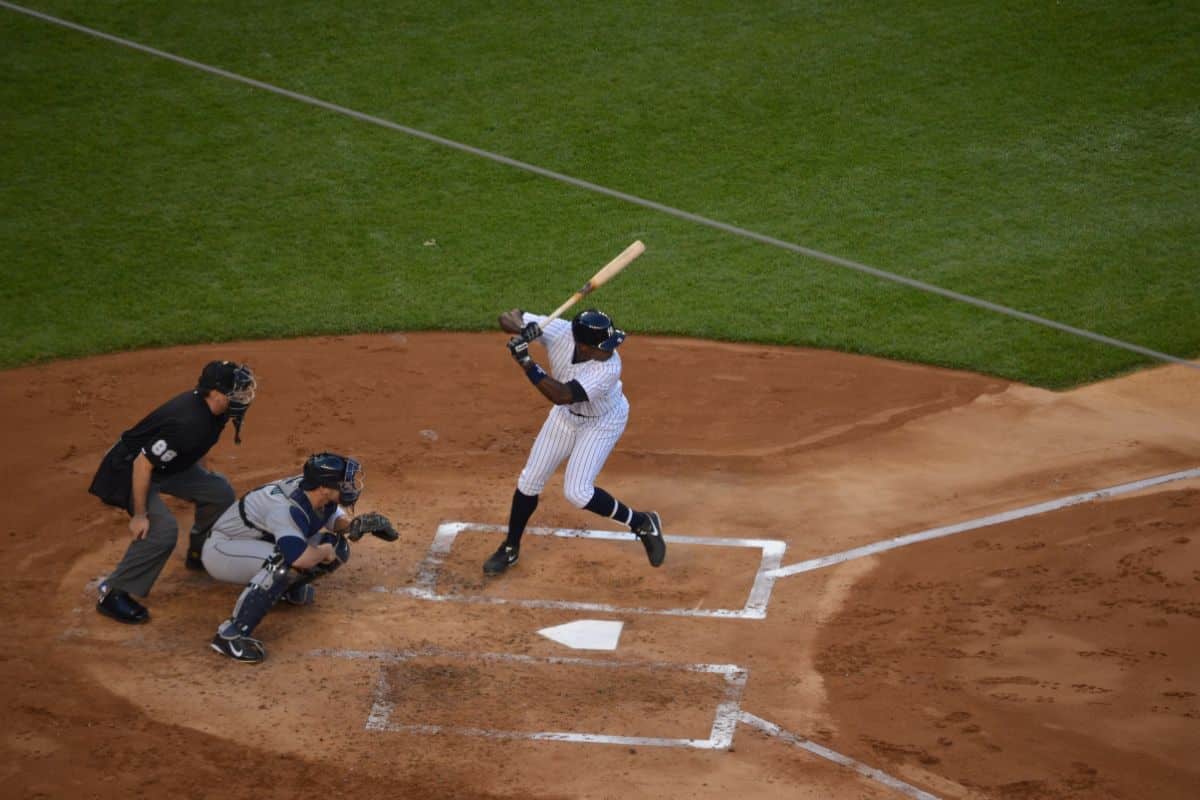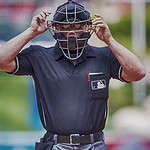Baseball is one of the most beloved sports in the United States, with millions of Americans playing it, and even more Americans watching it.
Everybody loves to enjoy a baseball game every now and then, but many people might not be familiar with all the terms that come with the sport.
This is understandable, because there are certainly a lot of terms!

When a game has as many rules as baseball, there are going to be plenty of concepts to get your head around in order to understand every action that’s happening on the pitch.
If you’re a baseball watcher, this is pretty important. If you’re a baseball player, though, it’s essential!
One of these terms that you might hear towards the end of a baseball game is “walk-off”. What does the term mean?
When can a “walk-off” occur? Well, for example, imagine that a baseball game has been going pretty evenly between its two rival teams.
When it comes to the ninth innings, which is the final inning, the two teams are tied.
However, the home team for the game then suddenly takes the lead – and they win the match immediately because of it.
Why does it end so soon? It’s because their competitors, the visiting team, won’t get another chance to bat.
However, there is much more to learn about walk-offs than that, and there are many more scenarios where a walk-off can occur in baseball.
Thankfully, we’ve got them all explained for you below.
In our handy guide, we’re going to tell you everything you need to know about walk-offs in baseball.
We’ll describe what they are, the various different types that can happen, where they got their name, and much, much more. Read on!
What Is A Walk-Off In Baseball?
To begin with, let’s answer the key question.
We’ve touched upon it a little, but a walk-off in baseball happens when the two teams are tied in the bottom of the final innings (which can either be the ninth innings, or an additional “extra innings” after that) and the home team suddenly takes the lead.
They can take the lead in a few different ways, with the most typical being single runs or home runs.
In the case of the latter, this is known as a “walk-off home run” and is a pretty spectacular way to end the game!
Either way, the visiting team is not going to get another turn to bat, which is why the game ends immediately.
However, single runs and home runs are not the only ways that a walk-off can be achieved.
Other types of play include “walk-off walk”, sacrifice flies, hit by pitches, and others, which could all be the play that wins the team the game too.
A walk-off walk is a very rare type of scenario, but if you’re lucky enough to see one it happens when the team with the final at-bat (the final turn at batting) can win the game if they score the winning run with a walk.
For those who don’t know, a “walk” is when a pitcher throws four of their pitches out of the strike zone, with the hitter not swinging at a single one of them.
For the restraint, the hitter is awarded first base typically, but in this scenario they’re winning the game too.
Sacrifice flies, on the other hand, are plays in baseball where a hitter bats a fly-ball that goes to the outfield (or beyond, to foul territory) which allows a runner to score.
This could be the play that pushes the home team to walk-off success in a tied bottom of the final inning.
Additionally, it could be a “hit by pitch”, which happens when a batter is hit by the pitched ball, without the batter even swinging at it.
With that being said, there can also be walk-off failures.
These occur when the final hitter isn’t able to make a single run, or alternatively the fly ball is caught by the visiting team.
There can be a lot of pressure at this end stage of the game, and it isn’t unlikely for walk-off failures to occur because of this.
All it takes is one wrong call, and the game can be lost!
How Does A Walk-Off Happen In Baseball?
A walk-off in baseball happens at the bottom of the final innings of a baseball game, in situations where both teams are still tied.
When it gets to this point, the winning run will determine who wins the game, which can seem a little drastic.
After all, both teams have played very well in order to get this far without their opponent overtaking them, so it can seem a bit sudden that one last hit can change everything.
However, that’s the way it goes, and that’s why walk-offs in baseball are an exciting opportunity.
Most baseball walk-offs occur with the home team taking a single run or a home run, though these are not the only ways.
The majority of baseball fans, however, will probably picture a home run when they think of the team “walk-off”.
This is likely because it’s such an exciting way to end the game. Imagine it!
The game is neck and neck for most of the duration, and the two teams reach the final innings tied.
All it takes is a fantastic home run from the home team and they not only take the lead – but take the game.
It may even be the case that this doesn’t happen in the ninth innings, but instead the “extra innings”.
This is an extra set of innings that is added onto the end of the game in some scenarios.
For example, the teams may fail to make a walk-off in the ninth (and typically final) innings, and so they’re still tied.
Well, that’s no way to end a game! For that reason, an extra additional inning is played in order to determine a proper winner.
What Are The Different Types Of Walk-Off In Baseball?
So far, we’ve mentioned a few different types of plays that could be the final ones that result in a walk-off win for the home team.
Additionally, we’ve also mentioned how single runs and home runs are probably the most common ways for a walk-off win to be achieved.
However, there are a handful of different types of walk-off that can be achieved in Major League Baseball games, and we’re going to go into all of them below.
The four most common types of walk-off that you’re likely to encounter are:
- The Walk-Off Single
- The Walk-Off Home Run
- The Walk-Off Grand Slam
- The Walk-Off Wild Pitch
Each of these has their own conditions, even though they all result in the same thing: the home team winning the baseball game.
They say that variety is the spice of life, and that’s certainly what baseball has.
We’re going to explain all these different types of baseball walk-offs right now, looking at how a home team might achieve them.
Next time you’re watching a baseball game where the two teams are tied at the end, try to see if any of these take place!
You can show your knowledge off to the people around you.
The Walk-Off Single

This is likely the most common type of walk-off that you’re going to encounter in a baseball game.
If things ever get to the walk-off tied stage at the final innings, this is probably the way that the home team is going to edge their victory!
Why is this? Well, it’s pretty much the easiest way to do it. As you can guess from the name, the Walk-Off Single involves a single.
You’ll know this, but a “single” in baseball is when a batter safely reaches the first base by batting a fair ball and running there before a fielder gets them out.
This is the most popular type of hit in baseball and is going to happen frequently in any game you see.
As a result, because it’s such a typical shot to make, it’s also likely to be the most common way that you’ll see a home team achieve a walk-off.
Imagine the scene: two teams are tied in their baseball game and they’ve reached the bottom of the final innings.
One of the home team’s batters steps up to the plate and gets ready. The pressure is certainly on, with the whole game potentially riding on them.
However, if they keep it simple and go for an easy walk-off single, then they should be able to reach victory.
The pitcher readies their arm and the batter readies his bat. The pitcher throws and… He hits it! It’s a fair ball and it goes a good, clean distance
The fielders run for it, but the batter starts running himself.
It’s neck and neck, with the batter nearing the first base, and a fielder’s fingers getting right near the ball.
The fielder grabs the ball and turns, ready to throw it back. But it’s too late. The batter has reached first base.
Not only have they achieved a single, but they’ve won the game with it, bringing his home team to victory with a “Walk-Off Single”.
It might not be the most explosive end to such a tight game, but it’s still an exciting end.
The Walk-Off Home Run
A much more explosive way to end a close game, though, is the “Walk-Off Home Run”.
Everybody knows what a home run is, whether you’re a baseball fan or not.
A home run occurs when a batter hits the ball in a way that allows them to run around all of the bases in one go, reaching the home plate again safely and scoring a “home run”.
With a “single”, the batter was hitting a ball that only gave them enough time to get to first base.
As you can guess, those hits aren’t too difficult for the opposite team to retrieve, and they can throw it back rather quickly.
Therefore, for safety, the batter will only run to first base and stay there.
They don’t have enough time to run to more bases, let alone run past all of them.
That isn’t the case with a home run, because the batter hits the ball in such a way that they do have time to circle all of the bases and get right back to the home plate from which they started.
This is because the batter has hit the ball in one of two ways.
The most common is when they hit the ball so that it goes over the outfield fence, which is the further area of the field – but not so far that it goes out of bounds!
When the ball goes to the outfield in these cases, it needs to do so without it touching the field. However, there is a rarer case for a home run.
This other type is when the batter is able to reach the home plate safely, having circled all of the bases, all while their hit ball is in play on the field.
Such a feat is pretty impressive, because the fielders should have an easier time of getting it when it’s still in the field.
This uncommon scenario is known as an “inside-the-park” home run. But what does all this have to do with a Walk-Off Home Run?
Well, these types of home runs are the ways in which a batter for a home team might secure a walk-off victory.
Just like a walk-off can be achieved with a single, it can also be achieved with a home run.
A “Walk-Off Home Run” happens when the winning hit during this tied final inning point is a home run.
This is definitely the most spectacular and most popular way to achieve a walk-off win.
After all, in an ideal world, every baseball game would finish with a home run. Home runs are the most exciting type of play in baseball.
The rush and euphoria that the audience feels (not to mention the tension!) as they see the batter running past first base and further, with it soon becoming clear that they’re going for the full home run.
Supporters of their team will cheer them on at each successive base they pass, while rival supporters cheer for the fielders to get the ball and throw it back, hoping that they’ll catch the batter/runner out before they make it home.
The rivalry is at its highest here, and the game is at its most enjoyable!
So, when the whole game’s outcome is riding on this homerun? The feelings of excitement are going to be higher than ever.
The Walk-Off Grand Slam
This is a very special type of walk-off. The “Walk-Off Grand Slam” occurs when each of the bases are loaded with base runners already.
With baseball, as you will know, there are often other runners on the field, waiting at their bases for an opportunity to run on.
These were once batters who began running around the bases, but haven’t been able to get back to the home plate yet.
They can only run on when later batters hit.
However, a “grand slam” occurs in baseball when all three bases have runners on, yet the new batter achieved a home run as well.
This means that when all four runs get back to home plate in this run, there will be a grand total of four runs achieved.
This is the greatest number of runs that can ever be made from a single shot in baseball.
The first ever grand slam that was achieved in baseball was in 1938, but walk-off grand slams are much rarer.
In the entire history of the MLB, there have only been around 200 to 250 walk-off grand slams achieved, which is a miniscule amount when you consider the total number of Major League Baseball games ever – over 218,000.
The Walk-Off Wild Pitch

One of the more interesting and unique ways to get a walk-off victory in baseball, the “Walk-Off Wild Pitch” is definitely one to look out for.
A wild pitch is actually a type of penalty that can happen in baseball games, but could also happen in a tied final innings and end up giving a victory to the home team.
In general, the walk-off wild pitch happens when the catcher is unable to control the ball that the pitcher has thrown, because the ball is thrown so far outside of the strike box.
As a result, the penalty is dealt to the pitcher. In these situations, the runner is allowed to run to the next base until the ball is recovered.
However, in cases where a runner is trying to steal a base before the wild pitch has been thrown, then the play is counted as a stolen base.
This is going to be a fairly rare way for a game to end, but it will definitely be memorable if this is what pinches the game!
How Did A Baseball Walk-Off Get Its Name?
Now that we’ve looked at various different scenarios in which a baseball walk-off could occur, you might be wondering how it got that name in the first place.
After all, they’re not technically “walking off”, they’re running!
Well, the name apparently dates back to pitcher Dennis Exkersley, who coined the term “walk-off”.
He used his term when describing game-winning home runs that were so deep that a pitcher didn’t even have to look at them.
They were so deep that you knew it was all over – so you just walk off. However, as time has gone by, the reason for its name has changed slightly.
This often happens with terms. As more and more people use them, the origins get muddled and change.
Nowadays, the term “walk-off” is thought of as a description of the losing team and how they’re left to walk off the field in sad defeat.
Either way, the term is used for the same situations, where the bottom of a tied final innings is just inched to victory by the home team.
What Is A Walk-Off Error?
There is the occasional case where the walk-off can be achieved through error, with the rival team making an error that then allows the home team to achieve a walk-off.
As you can imagine, this is one of the more frustrating scenarios for a visiting team to lose in.
Famous Walk-Off Home Runs
As we’ve said, a walk-off home run is pretty much the most spectacular type of walk-off victory.
As a result, there are many great instances where this has happened. We’ve got a list of some of the most famous and exciting instances below.
Kirk Gibson – 1988
Notable baseball player Kirk Gibson helped his team to achieve a walk-off home run in 1988.
It occurred in the bottom of the ninth inning (meaning that the game didn’t reach a point where it went into extra innings), and Gibson managed to hit a pinched ball that allowed him to do a full home run.
Bill Mazeroski – 1960
A slightly older instance here, famous baseball player Bill “Maz” Mazeroski achieved an impressive walk-off home run in a 1960 game.
Interestingly, it was in extra innings, meaning that neither team had managed to break the tie in the ninth and, typically, final inning.
This meant that the pressure to win was even higher!
Frequently Asked Questions
What MLB Team Has The Most Walk-Off Wins In A Season?
When it comes to walk-off wins in MLB history, the Pirates achieved the most in a single season all the way back in 1959.
Their overall record was 78-76. Funnily enough, this team was led by Bill Mazeroski, who we mentioned earlier!
Final Thoughts
A walk-off in baseball occurs when both teams are tied in the bottom of the final innings, and the home team suddenly takes the lead – winning the whole game.
- Fenway Park Seating Chart: Best Seats To See the Red Sox - July 17, 2023
- What is RBI in Baseball: A Simple Explanation of The “Ribby” - July 3, 2023
- What is DFA in Baseball? A Term No Player Wants to Hear - July 3, 2023








